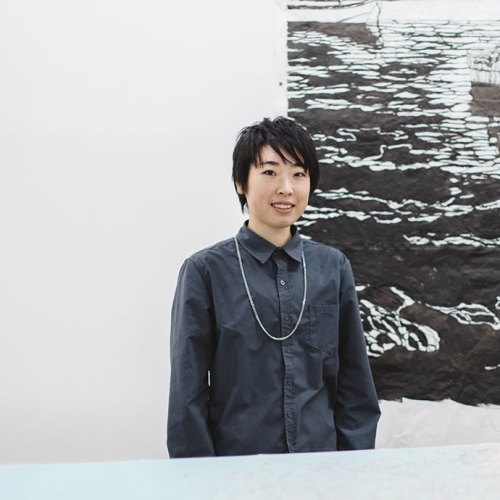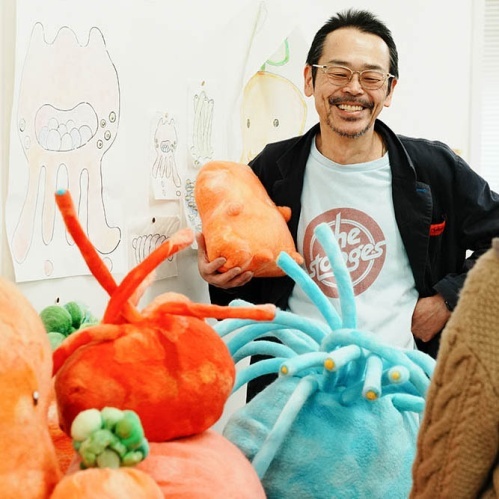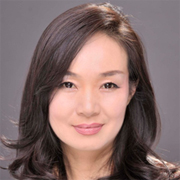
TOBA Mika
- Specialization
- Dyeing
[Expression Seminar & Applied Practicum / Year 3]
Students refine their craft under the guidance of instructors who specialize in various techniques, which include dyeing, weaving, felting, silk-screen printing, and sewing. Students explore the themes of fiber art and installation in the first quarter, wax-resist dyeing and kimono in the second, and texture in the third, deepening their grasp of the underlying concepts before producing original works using their chosen techniques. The theme for the fourth term is art and design, an independent creative practicum aimed at preparing students for their fourth-year seminar. Students are encouraged to explore the potential of textiles while developing works that reflect their own unique modes of expression.
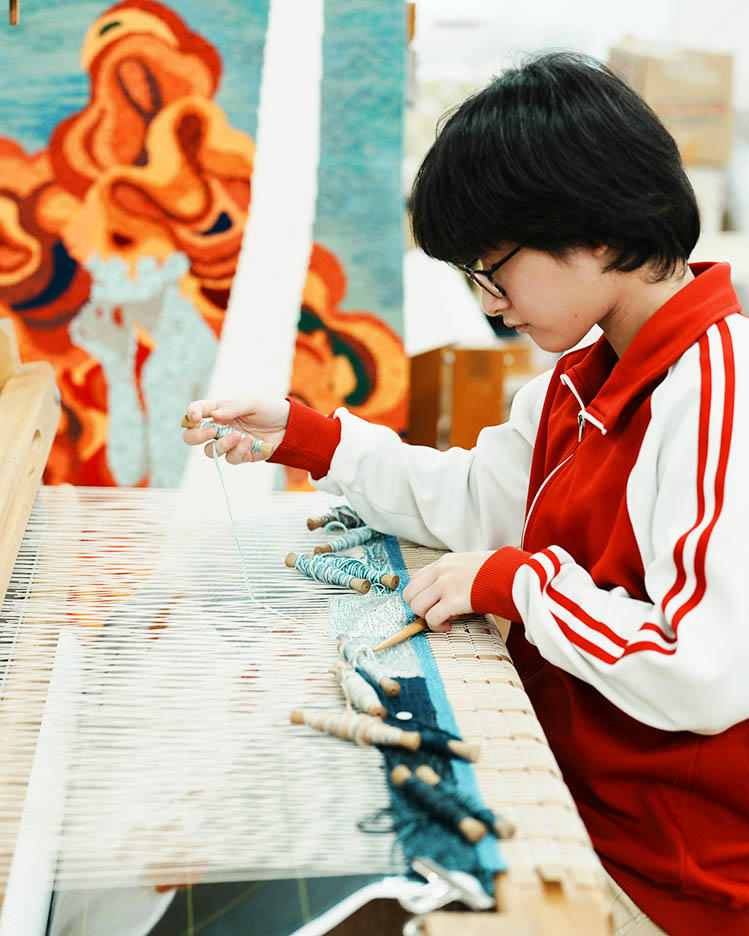
Students take cross-listed courses at the Faculty of Art to improve their observational, critical thinking, imagination, and other skills needed to build a firm artistic and creative foundation.They also learn the basics across all seven courses and start to explore which fields they would like to pursue.
Students deepen their understanding of basic techniques as well as the history of various techniques, including silk-screen printing and katazome stencil dyeing. Seminars on technique are divided into dyeing, weaving, and sewing.
Students explore the potential of textile expression by interpreting themes such as Communication and Environment, developing them into their own works, and expanding their creativity and critical thinking skills.
Students work on their graduation projects, making full use of the skills and expressive abilities they have developed over the past four years.They complete the final work of their student career in pursuit of originality and their own creative expression.
KIKUCHI Yuiko / Fourth-year student
EDAHIRO Kanon / Fourth-year student
CHEN KE / Fourth-year student
HIRAOKA Sorami / Fourth-year student
MAEDA Noa / Fourth-year student
ITO Rino / Fourth-year student
DO SHANNON KAYA / Fourth-year student
MATONO Satoko / Fourth-year student
Graduation Exhibition2023 President's Award
Our weaving studio is equipped with professional-grade looms.
PICK UP!
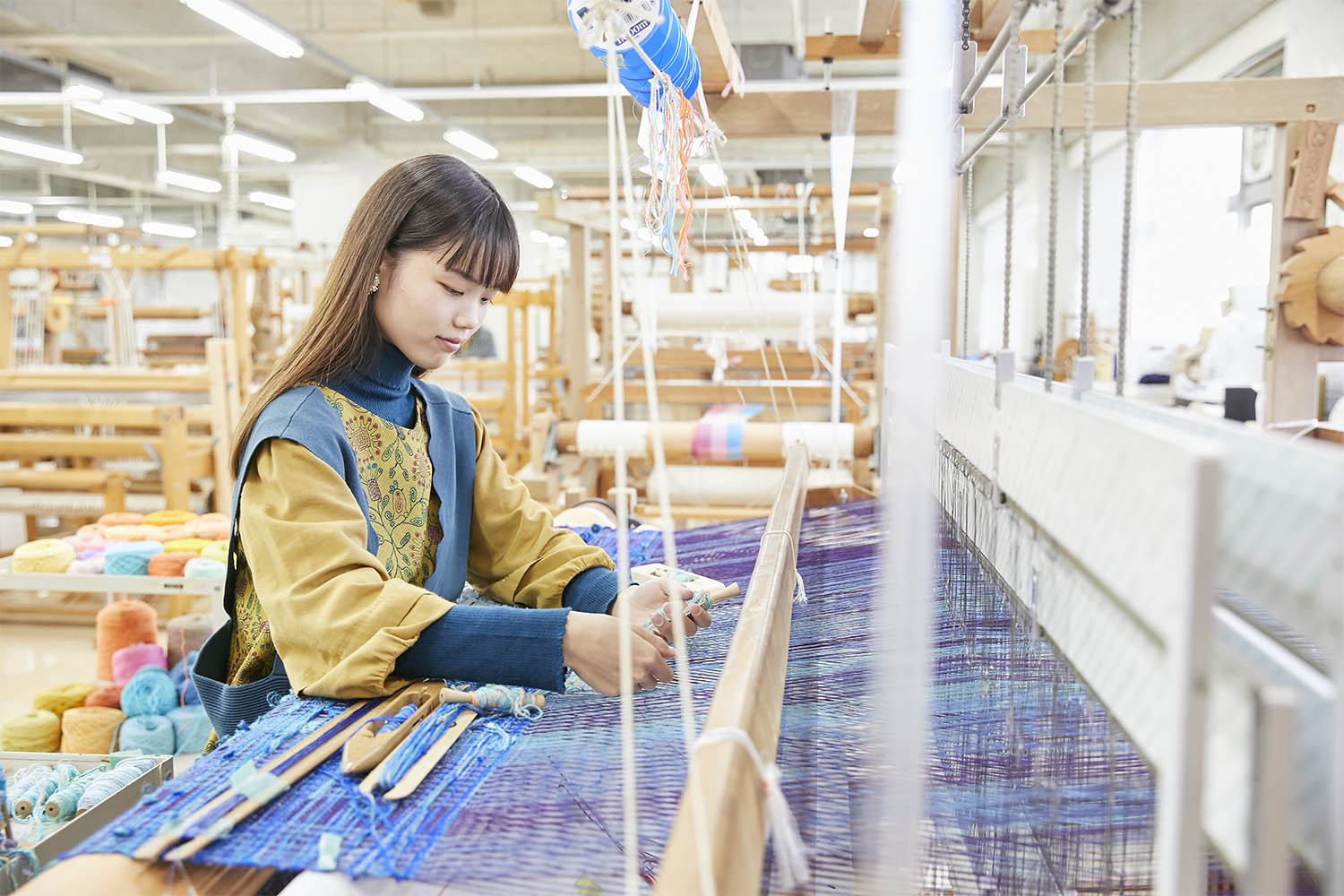
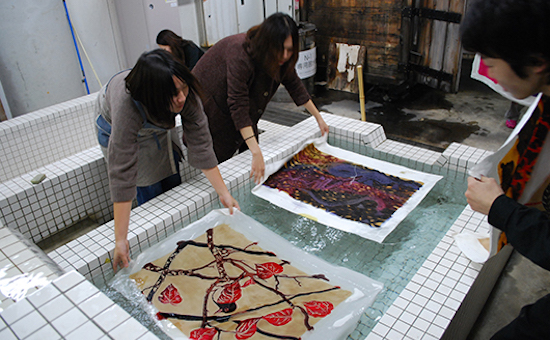
Our washing area, used after dyeing, was designed for maximum efficiency.
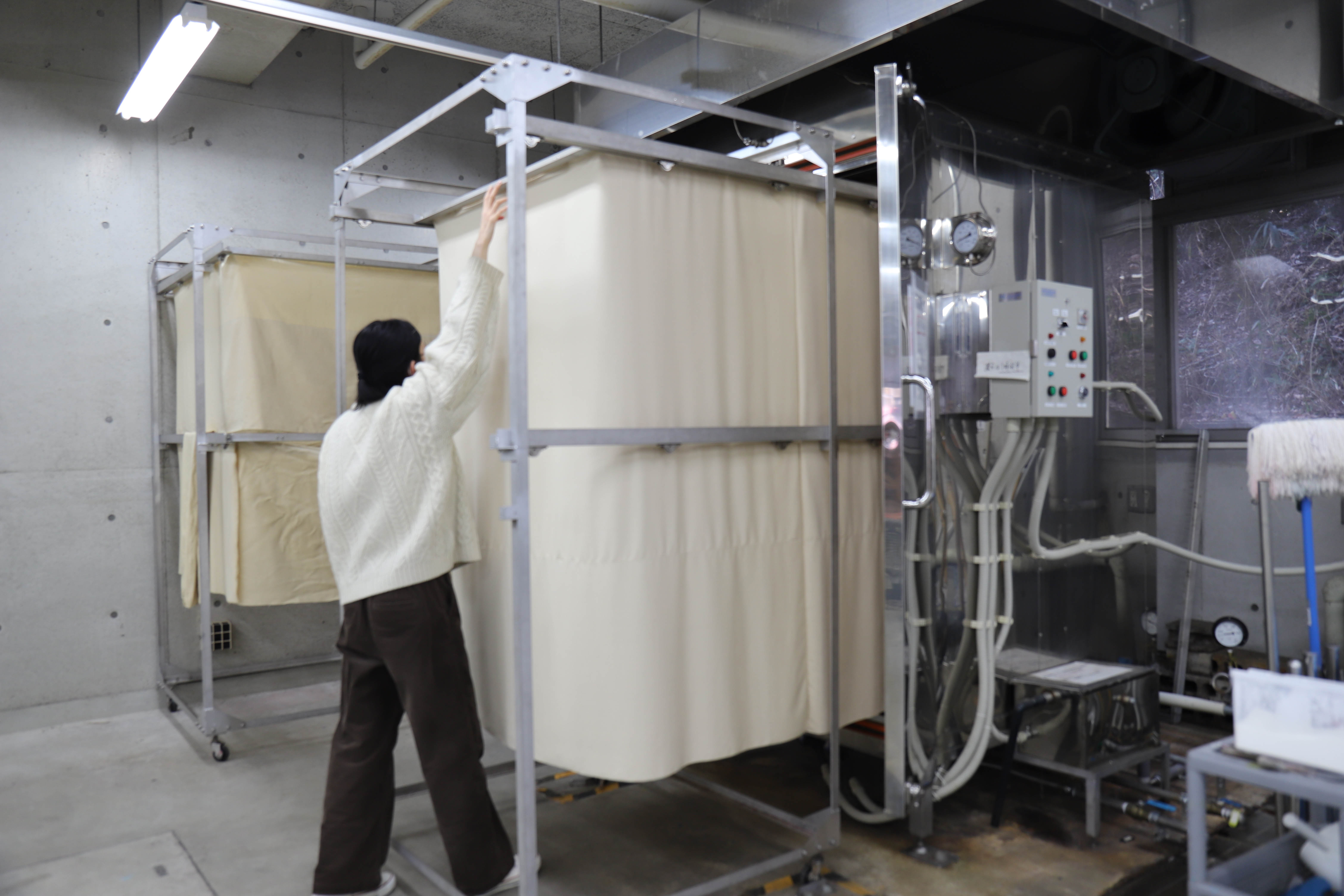
A large steamer is used to set or "fix" the colors on fabrics during the dyeing process.
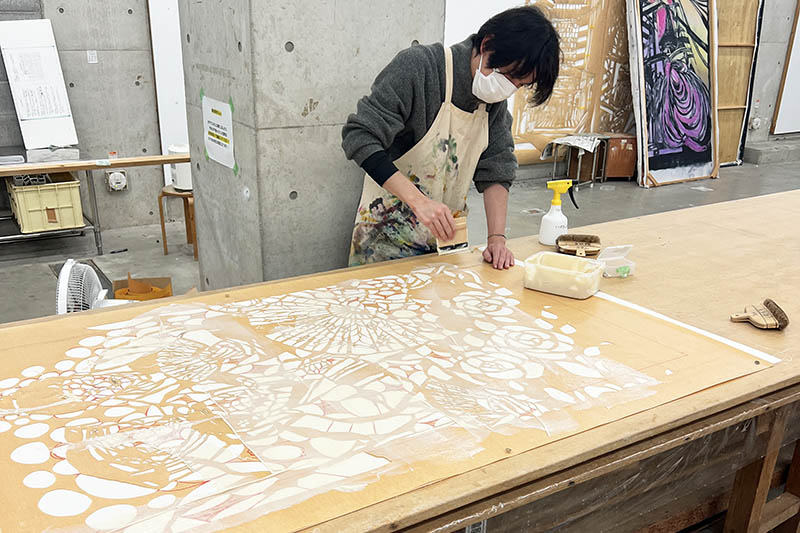
Studio for katazome dyeing.In addition to large two-dimensional works, there is also room to spread out and work with yukata and kimono fabrics.
